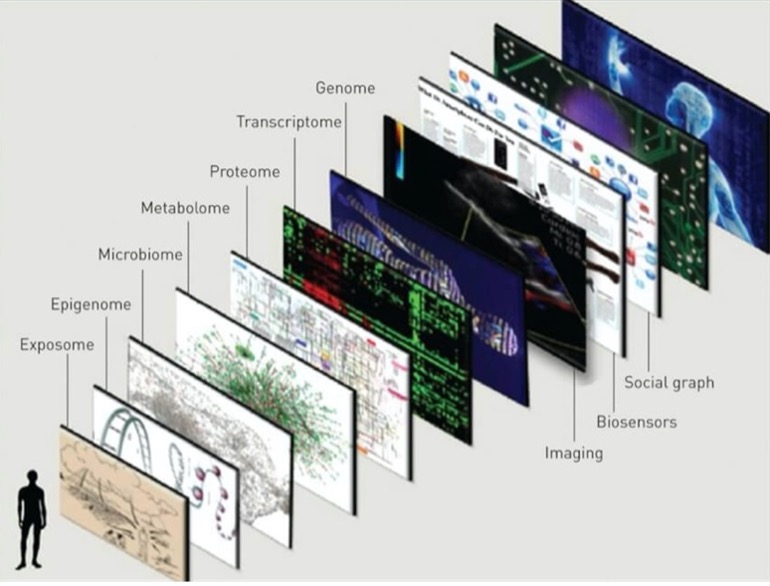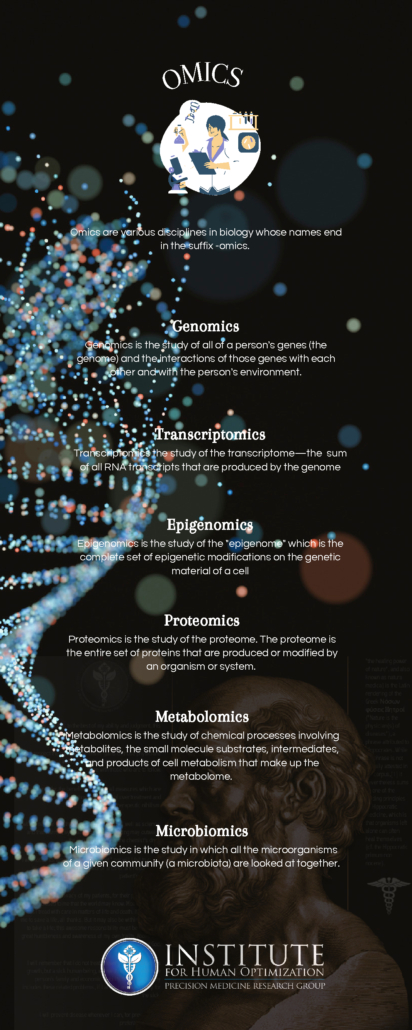A blueprint of a genetic “you”.
…
Our DNA determines an overwhelming amount of information about who we are, but other factors can also influence our health expression. Over the past few decades, the science and technology, and their applications in genomic have made breakthrough progress. Genomic data and genomic medicine services have become relevant in clinical applications as more and more clinicians use genomic data with the diagnosis and treatment of patients. How is genomics being used in medicine?
Let’s first start with answering: What is a Genomics?
In last week’s blog, we briefly discussed the Human Genome Project – a research project that successfully sequenced for the first time the entire human genome. This landmark effort was a breakthrough biomedical discovery in Genomics. Genomics is the study of your Genome, which is all your genes, including how your genes interact with each other and with your environment.
This is an exciting field in medicine as clinicians and researchers can analyze a genomics approach to understand the mechanisms of disease and work towards a preventative approach.
Clinical Application Difference between Genomics vs Genetics
Genomics refers to the study of your global genomic blueprint and how it orchestrates dynamic biochemical processes which influence your current state of health.
Genetics refers to a specific division of genomic medicine that focuses on rare disease findings associated with specific inherited gene mutations, inborn errors of metabolism.
The Institute for Human Optimization not focusing on the rare and obscure but translating your global genomic blueprint to self-decode and translate this information into actionable outcomes to harness your health potential.
Genomics in Medicine Today
Genomics allows providers to practice in a proactive care delivery mode. Modern genomics is being used in the following:
- Prenatal Genetic Screening Tests
- Cancer Research
- Polygenic Risk Scores
- Preimplantation diagnosis
- Companion diagnostics for prescribed drugs
- Epigenetics and gene regulation
- Next-generation sequencing
- Looking at the patient’s exome
Prenatal Genetic Screening Tests: Widely used currently, clinicians use genomic data during first and second trimester Prenatal Genetic Screening Tests which looks at a very small amount of fetal DNA (done by a simple blood draw) which looks at whether the fetus has certain genetic disorders such as Sickle Cell Disease, Cystic Fibrosis, and more.
Cancer Research: Genome sequencing in Cancer is a clinical area where genomics is being heavily researched. By using genomic data, researched have a better understanding of the biology of cancer and are leveraging this to find new ways to treat the disease. Additionally, utilizing genomic data is a promising step to predict cancer risk, prognosis, and precise response to treatment.
Polygenic Risk Scores: Additionally, a potential clinical service tool is looking at Polygenic Risk Scores. Polygenic risk scores look at your polygenic genetic architecture to identify genetic variants associated with diseases. With an increasing amount of research correlating Polygenic risk scores with disease status, this information can be useful in clinical decisions with individuals at high genetic risk of disease for risk stratification
Preimplantation Genetic Diagnosis: In Preimplantation Genetic Diagnosis, whole-genome sequencing of embryos prior to implantation is performed for pathogenic variation screening. This is used to prevent the transmission of known genetic diseases.
Companion Diagnostics for Prescribed Drugs: Companion diagnostics are medical devices that are used by clinicians to aid them in deciding which treatments and dosage to give specifically to that individual patient utilizing genomic insights. This medical device can be an in vitro diagnostic or an imagining tool that provides information needed to find a personalized treatment option by identifying what FDA-approved treatment options would be best suited for their individual case.
Epigenetics and Gene Regulation: the National Institute of Environmental Health Sciences defines Epigenetics as ‘a rapidly growing area of science that focuses on the processes that help direct when individual genes are turned on or off.’ Epigenetic regulation of gene expression is at the forefront of modern Genomics currently being used to assess your Biological age.
Next Generation Sequencing (NGS): refers to a method used to sequence DNA. This method is currently used by Pediatricians for Genomic diagnosis of Pediatric disorders. It is also being used by Oncologists for Precision Oncology migrating cancer treatments to a precision medicine approach.
Exome Sequencing: also known as whole-exome sequencing looks at expressed genes to try to find a genetic cause for disease expression. This is a genomic technique that is clinically relevant as most genetic variants in genetic diseases are expressed in the exome.
The Future is a Precision Medicine Approach
Already, more and more individuals have taken the first steps to obtaining information about their genome by using Direct-to-Consumer DNA testing services. More and more, people want to know more about their genome, whether that means information about ancestry, or a more medically information trait of disease, this has sparked consumer interest in personalized information about our health, genealogy, and more.
We have the blueprints to a genetic “you” and scientists have figured out what each specific gene does itself when changed or removed but now understanding how all genes work together in synchrony, and most importantly how to best use genomic information to improve clinical care is still being established.
Despite these challenges, at the Institute for Human Optimization, we are currently utilizing advanced molecular testing to predict how genes are theoretically behaving by assessing their structural makeup and biochemical expressions.
More about The Institute for Human Optimization
The Institute for Human Optimization is committed to helping you create a personalized plan for living your longest, healthiest life possible. My team and I leverage the most cutting-edge advances in genetic testing, nutritional analysis, and functional medicine to get to the root biological imbalances that cause aging.
The Institute for Human Optimization was created with the intention of pursuing a highly personalized approach to longevity medicine to help enhance healthspan. Where lifespan is the actual number of years we’re alive, healthspan is how many of those years are spent in health and wellness.
We believe that a long healthspan – not just a long lifespan – is the most important thing you can cultivate. A long healthspan means you don’t miss out on life as you get older. It means remaining independent and having the vitality to travel and see the world. A long healthspan means that you can be there – in full body and mind – for the people who need you the most and that every day will feel like a gift.
We know that each person is truly unique. From DNA to iris, we all possess a blueprint that is genetically inherited and environmentally influenced. By gaining a deeper appreciation for the person on a molecular level and addressing the root causes driving disease, we can help promote optimized health through our unique scientific, N of 1, approach to individualized care.
The Institute for Human Optimization provides the most comprehensive, data-driven, personalized approach to wellness. It is:
· Predictive – We use genomics and advanced biomarker testing to risk stratification and empowerment.
· Personalized – We use data-driven health information to curate actionable change for disease mitigation and prevention.
· Preventive – We utilize highly individualized programs tailored to your unique genomic blueprint.
· Participatory – We empower engagement in personal choices, which allows for improved outcomes and enhanced results.
I am so excited about the possibility to support you on this cutting-edge journey to extend your lifespan AND your healthspan. Click here to schedule Your Longevity Equation Epigenetic Consult! Can’t wait to meet you!




